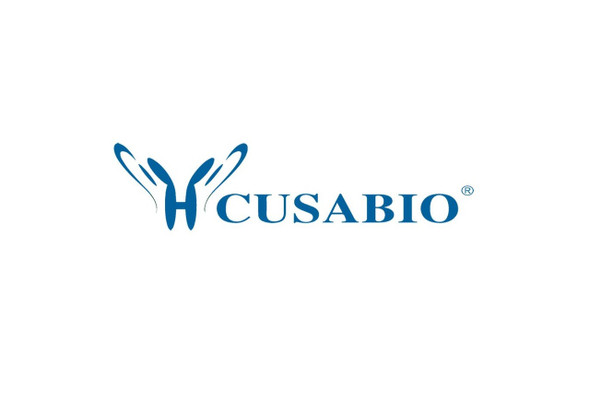Cusabio Human Recombinants
Recombinant Human Complement decay-accelerating factor (CD55), partial | CSB-EP004945HU1
- SKU:
- CSB-EP004945HU1
- Availability:
- 3 - 7 Working Days
Description
Recombinant Human Complement decay-accelerating factor (CD55), partial | CSB-EP004945HU1 | Cusabio
Alternative Name(s): Complement decay-accelerating factor(CD antigen CD55)
Gene Names: CD55
Research Areas: Immunology
Organism: Homo sapiens (Human)
AA Sequence: DCGLPPDVPNAQPALEGRTSFPEDTVITYKCEESFVKIPGEKDSVICLKGSQWSDIEEFCNRSCEVPTRLNSASLKQPYITQNYFPVGTVVE
Source: E.coli
Tag Info: N-terminal 10xHis-GST-tagged and C-terminal Myc-tagged
Expression Region: 35-126aa
Sequence Info: Partial of Isoform 2
MW: 45.4 kDa
Purity: Greater than 85% as determined by SDS-PAGE.
Relevance: This protein recognizes C4b and C3b fragments that condense with cell-surface hydroxyl or amino groups when nascent C4b and C3b are locally generated during C4 and c3 activation. Interaction of daf with cell-associated C4b and C3b polypeptides interferes with their ability to catalyze the conversion of C2 and factor B to enzymatically active C2a and Bb and thereby prevents the formation of C4b2a and C3bBb, the amplification convertases of the complement cascade (PubMed:7525274). Inhibits complement activation by destabilizing and preventing the formation of C3 and C5 convertases, which prevents complement damage (PubMed:28657829).; (Microbial infection) Acts as a receptor for Coxsackievirus A21, coxsackieviruses B1, B3 and B5.; (Microbial infection) Acts as a receptor for Human enterovirus 70 and D68 (Probable).; (Microbial infection) Acts as a receptor for Human echoviruses 6, 7, 11, 12, 20 and 21.
Reference: "Human rhinovirus 87 and enterovirus 68 represent a unique serotype with rhinovirus and enterovirus features." Blomqvist S., Savolainen C., Raman L., Roivainen M., Hovi T. J. Clin. Microbiol. 40:4218-4223(2002)
Storage: The shelf life is related to many factors, storage state, buffer ingredients, storage temperature and the stability of the protein itself. Generally, the shelf life of liquid form is 6 months at -20?/-80?. The shelf life of lyophilized form is 12 months at -20?/-80?.
Notes: Repeated freezing and thawing is not recommended. Store working aliquots at 4? for up to one week.
Function:
Involvement in disease:
Subcellular Location:
Protein Families:
Tissue Specificity:
Paythway:
Form: Liquid or Lyophilized powder
Buffer: If the delivery form is liquid, the default storage buffer is Tris/PBS-based buffer, 5%-50% glycerol. If the delivery form is lyophilized powder, the buffer before lyophilization is Tris/PBS-based buffer, 6% Trehalose, pH 8.0.
Reconstitution: We recommend that this vial be briefly centrifuged prior to opening to bring the contents to the bottom. Please reconstitute protein in deionized sterile water to a concentration of 0.1-1.0 mg/mL.We recommend to add 5-50% of glycerol (final concentration) and aliquot for long-term storage at -20?/-80?. Our default final concentration of glycerol is 50%. Customers could use it as reference.
Uniprot ID: P08174
HGNC Database Link: N/A
UniGene Database Link: N/A
KEGG Database Link: N/A
STRING Database Link: N/A
OMIM Database Link: N/A







